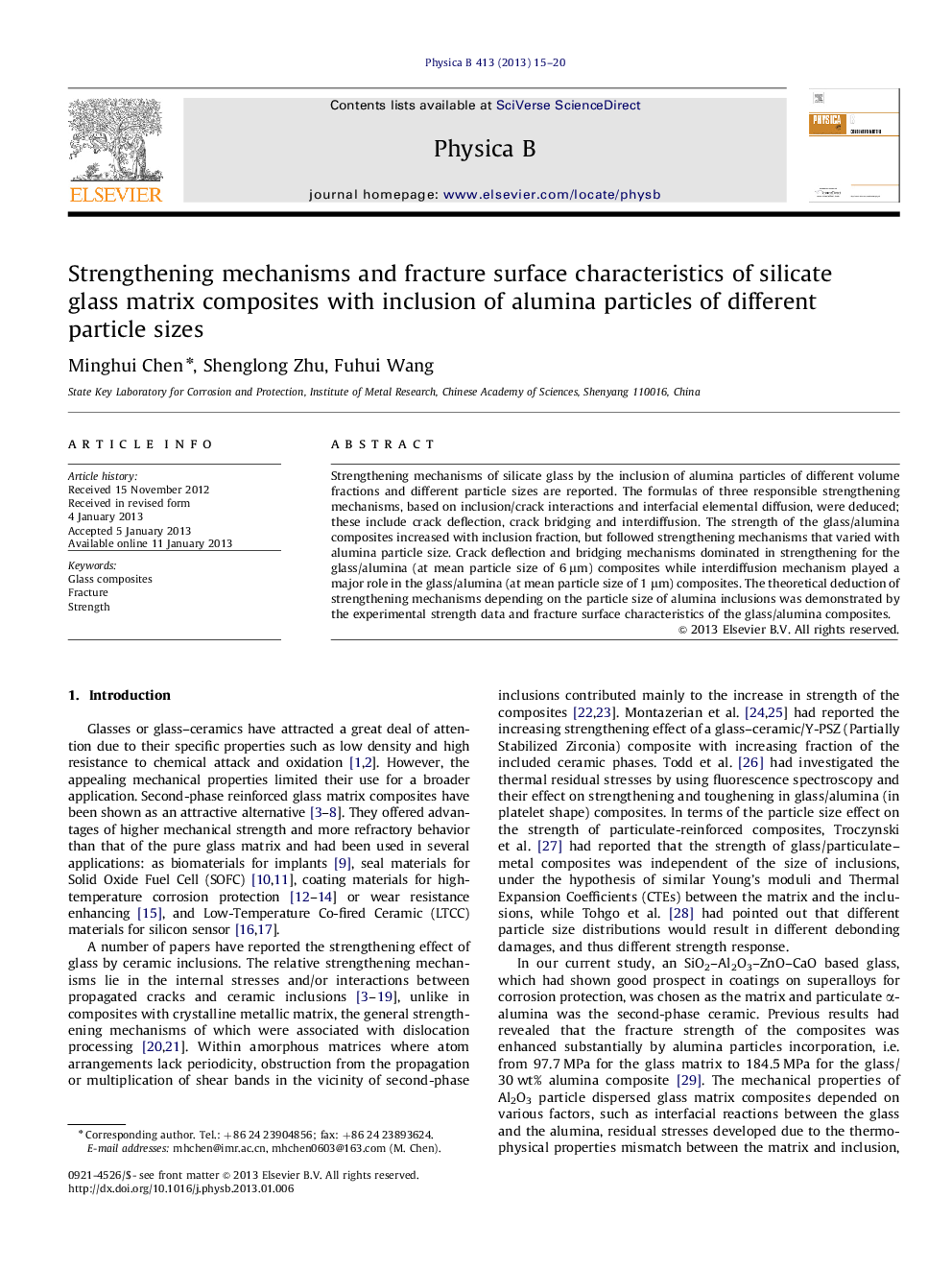| Article ID | Journal | Published Year | Pages | File Type |
|---|---|---|---|---|
| 8163665 | Physica B: Condensed Matter | 2013 | 6 Pages |
Abstract
Strengthening mechanisms of silicate glass by the inclusion of alumina particles of different volume fractions and different particle sizes are reported. The formulas of three responsible strengthening mechanisms, based on inclusion/crack interactions and interfacial elemental diffusion, were deduced; these include crack deflection, crack bridging and interdiffusion. The strength of the glass/alumina composites increased with inclusion fraction, but followed strengthening mechanisms that varied with alumina particle size. Crack deflection and bridging mechanisms dominated in strengthening for the glass/alumina (at mean particle size of 6 μm) composites while interdiffusion mechanism played a major role in the glass/alumina (at mean particle size of 1 μm) composites. The theoretical deduction of strengthening mechanisms depending on the particle size of alumina inclusions was demonstrated by the experimental strength data and fracture surface characteristics of the glass/alumina composites.
Keywords
Related Topics
Physical Sciences and Engineering
Physics and Astronomy
Condensed Matter Physics
Authors
Minghui Chen, Shenglong Zhu, Fuhui Wang,
